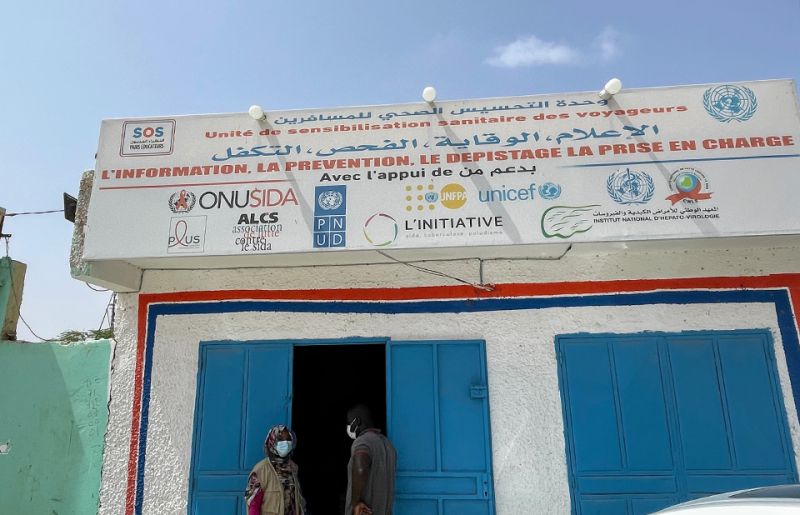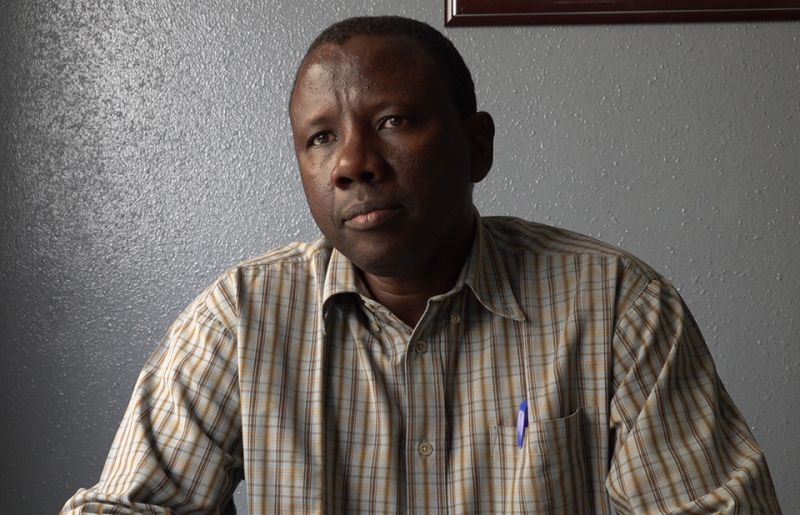In the lead up to the West and Central Africa Summit on HIV/AIDS taking place in Dakar from 31 October to 2 November 2021, UNAIDS asked its country directors across the region five questions about the AIDS response in their country. Here are the replies of Dr. Erasmus Morah, UNAIDS country director in Nigeria
“Recent years have been marked by positive trends when it comes to knowing the HIV epidemics. Thanks to better data, more efficient decisions were taken to address the needs of people living with HIV and place more than 80% of them on life-saving treatment. Going forward, we need to invest more efforts in domestic financing and protecting the rights of key populations.”
Dr. Erasmus Morah UNAIDS country director in Nigeria
The National response in Nigeria is growing more ambitious and efficient—better information and high-level political commitment have led to increased antiretroviral therapy coverage. Communities, networks of people living with HIV and key populations are given more space to be actors in the response. The private sector is stepping up to play its part in funding the response.
Despite such effort, Nigeria is failing children living with HIV and vertical transmission is on the rise. Violent arrests are still routinely carried out against key populations. And user fees continue to impede access to HIV care and hinder adherence to treatment. Resilience in times of the COVID-19 epidemics gives hope that more effort will be invested to address these systemic barriers to truly turn the tide on HIV and end AIDS.
1. What are the main areas of progress in your country’s response to the HIV epidemic in the last five years?
First, the availability of data has expanded to enable the country to truly know its epidemic and its response. Several surveys took place since 2017 which provided precious support to national decision-makers to prioritize, track program performance and mobilize resources to end the epidemic.
In 2017, the Nigerian President committed to treating 50,000 Nigerians annually and has since honored his commitment. HIV treatment coverage has leapt from 55% in 2016 to over 85% in 2020. Currently, we estimated that 90% of people living with HIV (PLHIV) know their status, 86% of them receive antiretroviral therapy (ART), and among those, 72% have a suppressed viral load—meaning they have no risk of transmitting it.
To put communities at the centre of the response, the network of persons living with HIV and key populations are engaged in community-led monitoring to assess the quality of services they are receiving and to use data to influence policy and lead to programmatic changes.
To reduce Nigeria’s over reliance on international resources, the Nigeria Business Coalition Against AIDS has worked with the National Agency for the Control of AIDS (NACA) and UNAIDS to set up a trust fund of 150 million US dollars for HIV to be launched on World AIDS Day 2021. A sustainability plan is also being developed for HIV, tuberculosis and malaria.
2. What are the main challenges that still need to be addressed?
Unfortunately, children are still being left behind, and their treatment coverage remains much lower compared with adults. Only 45% of children living with HIV know their status, 45% of them receive antiretroviral therapy (ART), and among those, 31% have a suppressed viral load. It is sad to note that prevention of mother-to-child-transmission has been less effective over the past five years.
We continue to deplore the frequent arrest of key populations. Criminalization of the behaviour of key populations, violence and widespread stigma and discrimination continues to feed their avoidance of health care centers.
Finally, some health facilities are still demanding user fees from patient—despite evidence from western and central Africa showing that user charges undermine uptake of antiretroviral therapy, hinders the retention of people in care and reduce the quality of care. Studies specifically carried out in Nigeria have also shown that user fees undermine adherence to HIV treatment (Global AIDS report, 2020).
3. How has COVID-19 affected the HIV response in your country?
Despite the initial negative impact of lockdowns, the contingency measures put in place has ensured that Nigeria was able to successfully put about 300,000 people on treatment by the end of 2020. Through the one UN Basket Fund, about 10,000 households of PLHIV in needs were provided with cash transfers, personal protective equipment, and hygiene products to help prevent and mitigate the impact of COVID-19.
To ensure service continuity, the National AIDS and STI Control Program (NASCP) issued a policy directive from the Minister of Health for multi-month dispensing of ART, meaning that all clinically stable patients were provided with 3 months of treatment at once. NASCP set up a situation room to track HIV commodity stocks. Furthermore, NASCP regularly updated the UNAIDS HIV service disruption portal with programmatic data to monitor HIV service delivery during the COVID-19 pandemic. PLHIV networks provided home delivery ART services for their peers who could not access health services.
4. Who are the unsung leaders of the AIDS response in your country?
First, we need to recognize the outstanding work delivered by communities of key populations and networks of Persons Living with HIV in Nigeria. They truly are unsung heroes of the AIDS response. We also need to laud the support and commitment of international partners such as PEPFAR and the Global Fund.
5. If you could ask your Head of State to change one thing to strengthen the HIV response, what would it be?
I would call on Nigeria to take forward its commitments by investing its fair share in the AIDS response and by increasing domestic financing.









